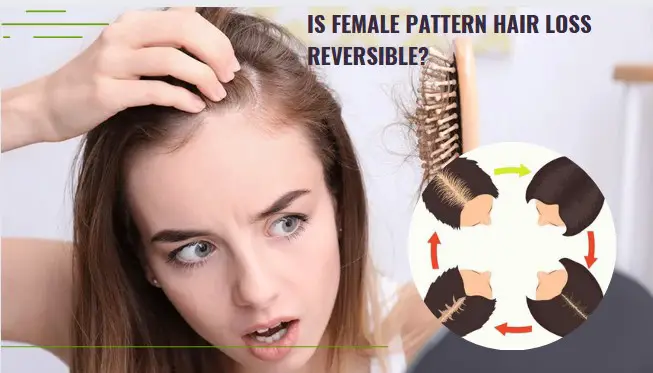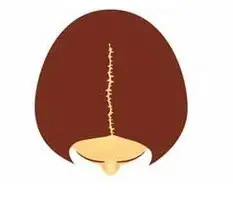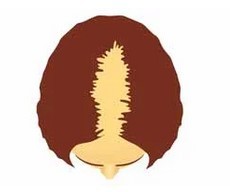The Ludwig pattern hair loss, also known as female pattern baldness, is classified into three stages by the Ludwig classification system: Hair loss on this scale can be classified according to the type of hair loss and the severity of the hair loss. Type 1 indicates the earliest signs, and Type 3 is the most severe. You can use the Ludwig Savin scale to identify female pattern hair loss in yourself. However, a professional consultation is recommended to accurately determine the hair loss’s severity. (1)
What is Female Pattern Baldness?
Female pattern baldness is a major problem for women. In this case, women start having baldness in a bit similar pattern as men. It can begin to even in the teenage. It may be due to some illness, hormonal imbalance, or disease. However, heredity is the main cause of female pattern baldness. As a result, women often go for various methods like hair transplantation for hair loss.(2)
In the female pattern baldness, hair starts thinning over the top and front of the head. It can happen to anyone though generally, women suffer from this problem after menopause.
Normally, women lose around 100-125 hairs per day, which is normal. However, women approach a dermatologist more than this when they see hair fall. It is seen that hair loss may genetically come from the family of either father or mother.

Female pattern baldness is accompanied by other signs of hormonal imbalance like excess facial or body hair. Hair loss in women can occur after pregnancy. In some cases, it can be after the discontinuation of birth control pills. Sudden physical or psychological stress can also cause hair fall in women. This type of hair loss is known as Telogen Effluvium and is usually temporary.
The Ludwig pattern hair loss in women can differ slightly from that in men. In women, it is only sometimes recognizable as in men. If there is a sign of hair loss in women, she can not be sure whether it is temporary or permanent. It can even be due to pregnancy or illness.
Female pattern baldness is caused by a male hormone called testosterone in the female body. The androgen hormone causes testosterone. It is a known fact that certain women are more sensitive to this hormone than others. This sensitivity causes thinning of hair on their scalp.
The male hormone testosterone interacts with an enzyme called 5 alpha-reductase, which is produced by the body. The interaction causes the production of DHT within the hair follicle.
DHT is responsible for the production of shorter and finer hairs. When DHT is not received well by hair follicles, it results in a reduced blood supply. It results in thinning of hair on the scalp and, at last balding.
In the case of hair fall, self-diagnosis is not a good idea because women tend to have a less obvious pattern of baldness. Instead, the diagnosis should be made by a trained and experienced surgeon only.
In the case of hair fall in women due to androgenetic alopecia, hair does not uniformly grow smaller in diameter. Instead, women tend to have miniaturizing strands of variable diameter over all affected areas of the scalp. Other factors can also cause miniaturization or reduction in the diameter of the hair. It is not in itself a diagnostic feature of androgenetic alopecia. Even in post-menopausal women, hair may begin to miniaturize and become difficult to style. Only a specialist is capable of a proper diagnosis of the problem.
After a proper diagnosis by a trained physician, the patient should go through appropriate treatment. (3) Often the patient is administered Rogaine. Aldactone is another medicine that can help many women, especially those having hair fall after menopause. However, it takes months to have some effect on hair. Hair transplantation is a very popular method used in the case of female pattern baldness.
Unlike the Hamilton-Norwood Scale, which assesses male pattern baldness, The Ludwig hair loss Scale categorizes female pattern baldness into three stages (sometimes called stage or type) starting from mild, moderate, to severe.
Ludwig scale hair loss stages
We are utilizing the Ludwig female hair loss scale to focus on different stages of female hair loss for treatment options depending on the severity and requirements of each type of hair loss.
The Ludwig pattern hair loss stages are:
Stage 0. No type of hair loss
The hair looks healthy and thicker, and you can’t see any scalp through the hair, even when wet.

Stage 1. Type 1 hair loss (Mild)
This Ludwig-type hair loss is the first early sign of female pattern baldness, with some mildness, where hair thinning is noticeably evenly distributed on the scalp. At this thinning stage, hair loss is undetectable, and even little hair loss techniques and hairstyles can hide it.

Stage 2. Type 2 hair loss (Moderate)
Now, this Ludwig pattern Hair loss in the moderate stage is becoming more visible to the naked eye, with a widening of the midline part and a decrease in hair volume. In addition, hair is thinner at 50 percent to 70 percent on top, and baldness is noticeable.

The Ludwig-savin scale classifications of i to ii are easily reversible with simple hair loss DHT blocker shampoos and hair growth supplements treatment.
Stage 3. Type 3 of female pattern baldness (Severe)
The final stage shows a vast amount of hair loss; this is the most severe type of female pattern baldness, with more scalp showing than hair, and will need more advanced treatment than just a cover-up hair patch for women.

Is female pattern hair loss reversible?
Yes! Treating female baldness can reverse any Ludwig pattern hair loss type with the right approach.
How to reverse pattern hair loss in women:
- Early treatment.
- The sooner you act, the more likely you will retain, maintain and regain.
- Be consistent.
- Once you start a treatment regimen, you must follow through with it for at least 6 months…..real results take time.
- Stay POSITIVE.
Hair transplant treatment options
With constant updates and advancements in hair transplantation, this option is worth a second look.
Topicals and non-surgical options
If the cost of hair transplants is out of your reach, there are many non-surgical options.
Remember, millions (maybe billions) of women like you are also fighting the good fight, so stay POSITIVE; you are not alone. Together we will one day transcend hair loss.
Treatment for Ludwig pattern hair loss
Oral minoxidil (brand name Loniten) is a medication for female pattern hair loss (FPHL). It is approved by the U.S. Food and Drug Administration for prescription by a physician.
Topicals
There is still no complete “cure” for baldness. But topical hair loss treatments such as special shampoos and various scalp treatments can complement proven treatments such as Finasteride, Minoxidil, and non-surgical hair restoration.
Concealers
One of the most common factors that make hair loss or thinning hair obviously is that, usually, standard hair color is darker than the scalp. Hair loss concealers discreetly hide see-through bald spots. Thinning hair on light skin and dark hair are the most obvious. Hair loss concealers such as concealing sprays, concealing fibers, and concealing powders minimize the contrast between scalp and hair color. Optional hair extensions for female pattern baldness.
Hair transplants
Hair transplantation is a surgical technique that involves moving individual hair follicles from one part of the body (the donor site) to bald or balding parts (the recipient site). It is primarily used to treat male pattern baldness. In this case, grafts containing hair follicles that are genetically resistant to balding are transplanted to the bald scalp.
DHT inhibitors
DHT Blockers work by inhibiting the 5-alpha-reductase enzyme. Basically, a DHT blocker and 5-alpha-reductase enzyme fit together like a puzzle. When that happens, the enzyme can’t join with testosterone to make DHT. Thus, DHT levels go down, and our hair loss stops. In many cases, hair will also grow back.
Growth stimulants
Red light therapy for hair growth products that many believe will stimulate existing hair growth. Some low-level laser therapy caps and hair comb products work by enhancing cells and vascular proliferation, while others may prolong the anagen phase of the hair cycle.
[slide-anything id=’9338′]
What is the Ludwig scale for?
The Ludwig scale is for most women with female pattern hair loss. With its goal to classify the severity of female hair loss, Dr. Erich Ludwig came up with what is now known as The Ludwig patten hair loss Scale in 1977- dividing it into 3 levels based on his observations from 468 women who had experienced hair loss at one point or another.
Related Post: Female Pattern Hair Loss Success Stories
- AI Powered Bald Filter Online 2024: See Yourself with No Hair! - January 19, 2024
- Harklinikken Bad Reviews 2024: Analyzing Negative Feedbacks - January 18, 2024
- How to Get the Alex Eubank Hair | Step-By-Step Tutorial 2024 - January 18, 2024







